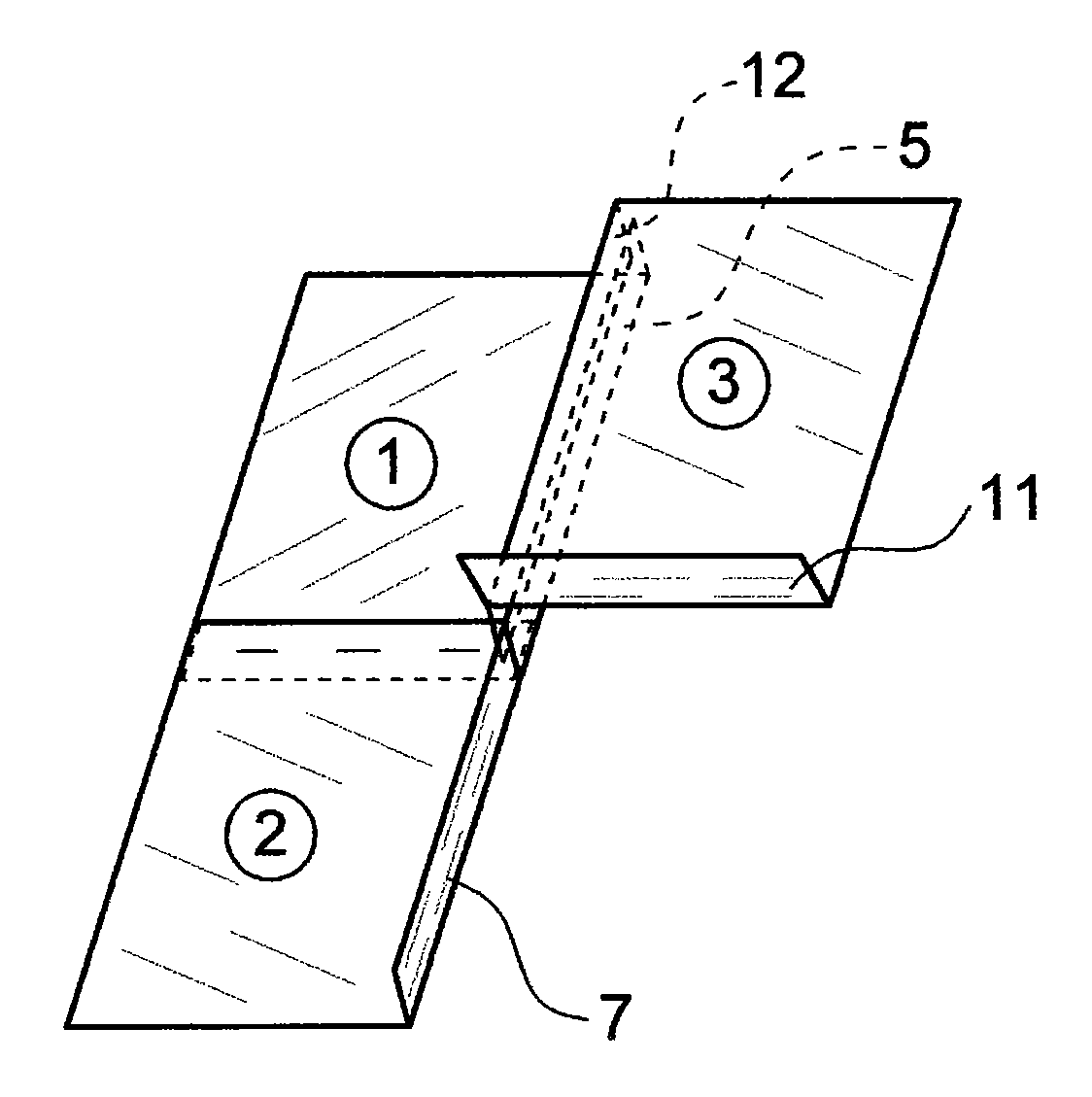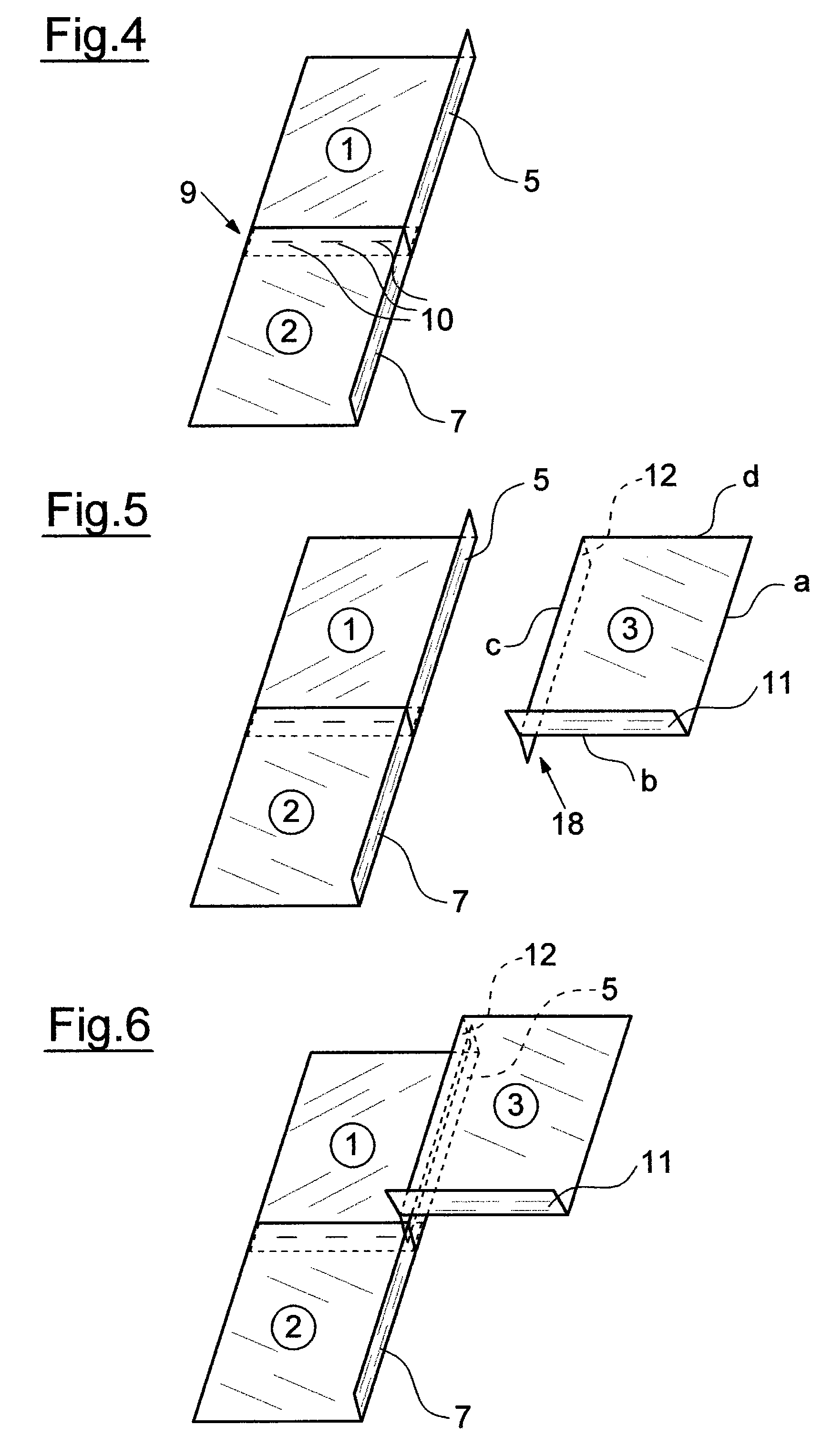Electromagnetic shielding
a technology of electromagnetic shielding and shielding chamber, applied in the field of electromagnetic shielding, can solve the problems of not being able to achieve the effect of practical electromagnetic shielding, not being able to protect technical installations, and being able to disturb or destroy all electronic circuits. achieve good electric connection
- Summary
- Abstract
- Description
- Claims
- Application Information
AI Technical Summary
Benefits of technology
Problems solved by technology
Method used
Image
Examples
Embodiment Construction
[0020]The basic configuration of a shield for a room or for a building is not shown in the drawing in detail. It consists of a multitude of mesh and grid sections 1-4, which are connected in an overlapping and conductive manner as shown in the drawings. They form a mesh or grid and completely surround the room or the building from all sides, from the ceiling, from the ground, and they are grounded at least in one point, preferably in many points.
[0021]In the area of doors and windows care must taken that the grid or mesh structure is realized in a similar manner, whereby in particular the tight and conductive alignment of the surfaces moveable relative to each other, typically the contact areas of window and door folds, is important. Here, the shield can be provided on the inside or on the outside or on both sides. For rooms the shield is preferably provided on the inside, for buildings the shield is preferably provided on the outside.
[0022]The basic configuration of a shield made f...
PUM
 Login to View More
Login to View More Abstract
Description
Claims
Application Information
 Login to View More
Login to View More - R&D
- Intellectual Property
- Life Sciences
- Materials
- Tech Scout
- Unparalleled Data Quality
- Higher Quality Content
- 60% Fewer Hallucinations
Browse by: Latest US Patents, China's latest patents, Technical Efficacy Thesaurus, Application Domain, Technology Topic, Popular Technical Reports.
© 2025 PatSnap. All rights reserved.Legal|Privacy policy|Modern Slavery Act Transparency Statement|Sitemap|About US| Contact US: help@patsnap.com



